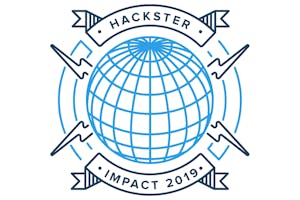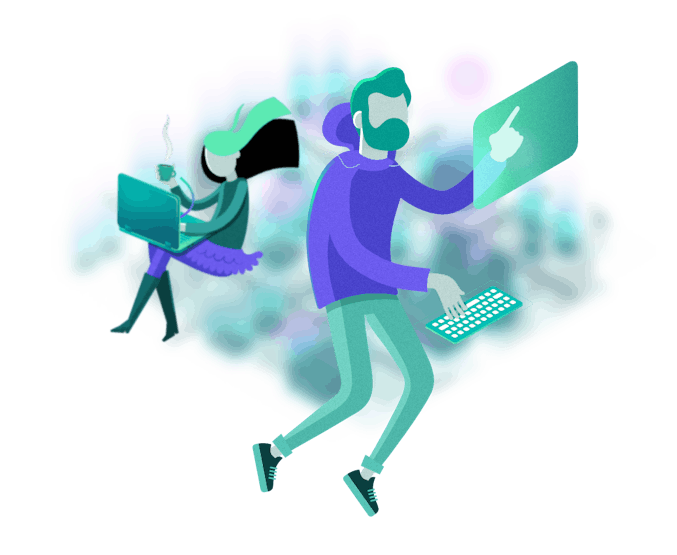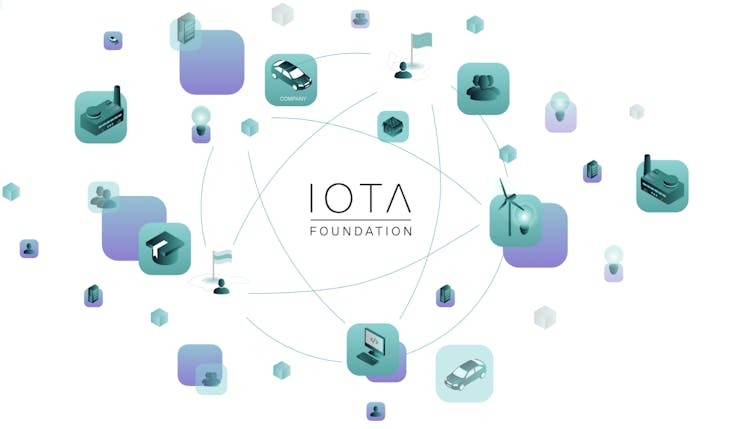
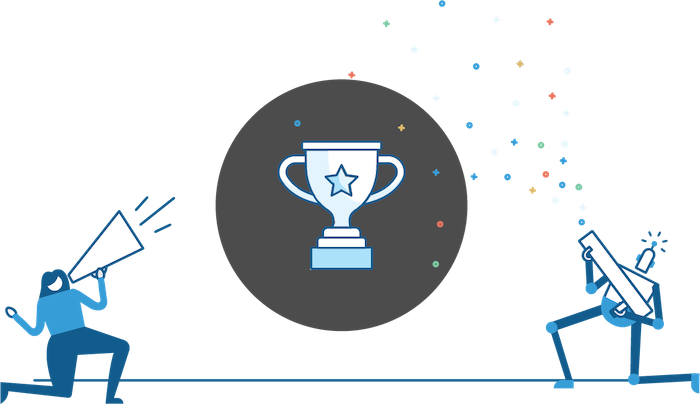
Smart Mobility
1st place was awarded an IOTA Tokens ($1,500 value), 2nd place was awarded an IOTA Tokens ($750 value), and 3rd place was awarded an IOTA Tokens ($250 value)
Smart Energy
1st place was awarded an IOTA Tokens ($1,500 value), 2nd place was awarded an IOTA Tokens ($750 value), and 3rd place was awarded an IOTA Tokens ($250 value)
Smart Buildings
1st place was awarded an IOTA Tokens ($1,500 value), 2nd place was awarded an IOTA Tokens ($750 value), and 3rd place was awarded an IOTA Tokens ($250 value)
Smart Districts
1st place was awarded an IOTA Tokens ($1,500 value), 2nd place was awarded an IOTA Tokens ($750 value), and 3rd place was awarded an IOTA Tokens ($250 value)
Hackster Impact Prize
The winner was awarded a $500 Gift card + Video interview + More ($680 value)
Overview
The IOTA Foundation, together with industry co-sponsors, are hosting a contest to encourage the development of innovative Smart City solutions, leveraging IOTA’s Distributed Ledger Technology.
We challenge you to develop an open source solution using the IOTA Protocol to create value, business models, and/or building blocks that can answer the themes posed by companies in the field. We are excited to see the numerous creative and tangible submissions to the Smart City contest.
BackgroundThe world is becoming more and more urbanized. By 2040, 65 percent of the world’s population will be living in cities. 1.3 million people move into cities every day. Ubiquitous connectivity, big data and analytics are enabling Smart City initiatives all over the world.
IOT-M2M platforms will reduce the time, cost, and risk to connect multiple systems in a city, improving infrastructure, creating more efficient and cost effective municipal services, enhancing public transportation, reducing congestion and keeping citizens safe and more engaged in the community.
IOTA is another element in the IOTA-M2M equation. We've seen the rise of technologies that can cheaply and effectively connect devices together. IOTA expands the concept by not only enabling data transfer but also value transfer. This addition can enables new ways for devices to sell and purchase goods or services. We believe that DLTs can accelerate the growth of the IOT-M2M world.
Contest ThemesIOTA is built to solve real world problems. So while we've centred the contest around IOTA technologies, we've also enlisted some help from companies to pose real-world challenges that are faced today. These challenges - listed as themes below - will guide you in creating unique solutions using a technology that has most likely never been applied in that area.
We encourage you to bust out your dev kits, open your IDEs and get cracking on the challenges posted below!
______________
Theme 1: Smart MobilityHow can vehicles engage in transactional data for things like fleet infrastructure and predictive maintenance?
The way we move in cities is changing. Advances in technology and new mobility services make traveling in cities safer and more efficient. At the same time, vehicle ownership is shifting. Tomorrow, cars may not belong to individuals but rather to cities or fleet managers. Data uploaded by these cars (eg, number of times the vehicle brakes and road localization) are essential to maintaining a good ratio of working vehicles and enabling the full autonomy of a Smart City. How can vehicles engage in transactional data?
The challenge
How might we leverage DLT to enable mobility services to publish, tender and purchase information relevant to things like fleet infrastructure and predictive maintenance
- Understand the car data needs from the different actors of the ecosystem (eg, car manufacturers, OEMs, fleet operators, citizens, insurance providers, service providers, road/motorways operators), including how to segment and monetize data per the different actors in the ecosystem in a smoother and easier way than centralized solutions.
- Encourage all ecosystem actors to share their data (token or other rewards) within the ecosystem.
______________
Theme 2: Smart EnergyHow can we trace the green origin of electricity from source to delivery?
In order to meet rising energy demand from a growing population, we need to accelerate solutions that are abundant, green and cheap while, at the same time, changing the way we consume energy. Solutions such as solar and wind offer cleaner and more sustainable options. And together with battery technology, we can store energy for use throughout the day. These new technologies are also creating new peer-to-peer models for sharing energy and for energy management and trading by directly connecting local producers and consumers. This allows energy to flow depending on demand, therefore self-regulating consumption and right-sizing energy systems.
The challenge:
Les Orres is a large mountain resort in the Southern Alps and is positioned as the pilot City of tomorrow. The resort is also a project leader of the European INTERREG Smart Altitude project involving 11 partners from 6 countries. As the resort explores new models and applications it is increasingly looking to DLT to reduce its energy consumption, operate more efficiently and develop peer-to-peer applications both within and across districts, cities and countries.
How might we trace the green origin of electricity from source to delivery and its consumption from consumer to producer. Potential solutions should address one (or more) of the following topics:
- Distributed energy exchange and trading network - demonstrate the ability to advertise, purchase and sell energy in an energy market using DLT
- Proof of green origin of electricity - produce an immutable trail from solar panel to grid and from grid to home
- Energy metering standardization and compliance to TSO, DSO and regulator’s validation - Increase control, privacy and trust in energy metering through DLT
- Energy demand balancing - predict demand and offer in the prosumer energy market, by allowing a GDPR compliant sharing of producer and consumer data
- Energy conscious behavior - produce an auditable eco-badge and reward mechanism for the buildings, transport system, and citizens creating and using renewable energies
______________
Theme 3: Smart BuildingsEnhancing the performance of commercial buildings and attractiveness for tenants?
Buildings are becoming smart(er) and green(er) as Internet of Things (IoT) technology changes the way buildings are designed, operated and maintained.
Smart buildings are more energy efficient, easier to maintain, more comfortable for occupants and have healthier indoor environments -- and are energy positive (producing more energy than they consume). Examples include wireless energy consumption monitoring to HVAC use and from indoor air quality monitors to devices that can measure space utilization or occupancy, buildings. At the same time, buildings are becoming more data driven and automated as IT and control equipment continues to improve. Buildings, their different systems and their occupants data can be integrated into a single ecosystem, enabling additional operational improvements for facility and space management. This, however, poses challenges ranging from trust to privacy to liability management.
The challenge:
The Powerhouse concept is based on that an energy-positive building that in the course of a 60-year period generates more renewable energy than the total amount of energy that would be required to sustain daily operations and to build, produce materials and demolish the building.
ENTRA’s Powerhouse Brattørkaia is the world's northernmost energy-positive building, where the focus is designing and operating a smart commercial building of the future that are green, good for tenants, and have a strong business case.
Thanks to the high insulation and low air tightness, the energy behavior of positive buildings is completely different for the traditional buildings. The energy paradigm is changing. The second order physics govern the energy transfer (the major heat losses are through the thermal bridges, air handling units are equipped with heat recovery units that could be by passed by windows openings, etc). In this framework and despite the existing building energy management systems, the use of IoTs becomes quite mandatory in order to operate in an accurate manner the building and the associated HVAC and to use in an optimum way the available space.
How might we enhance the performance of commercial buildings for building owners as well as enhance the attractiveness for tenants by developing a digital twin for facility and space management. The approach is dedicated to initial and continuous commissioning (mandatory ones or performed by the facility manager).
- Utilizing building data (automated rules for energy usage, energy trading, occupancy levels of public areas, automated tenant billing, remote systems control, etc.)
- Proactive maintenance (regularly scheduled service and maintenance contracts, using on-board sensors to monitor equipment performance for the purposes of warranty)
______________
Theme 4: Smart DistrictsDeveloping integrated approaches for IoT and data infrastructure within cities?
We seek to create smarter and more interconnected communities. But an intelligent city cannot be achieved without intelligent infrastructure to meet the increasing pace of urbanization.
In order to optimize resources and improve performance, as well as break down old silos around how we move in cities, produce energy, share information and pay for it, we need an integrated approach to securely store, sell, and access data streams across our urban environment. Take charging an electric vehicle, for example. It is not a seamless process: you need to find an available charging station, register for it, and pay for the energy with a proprietary system. And this changes if you move between cities or charging station providers. Simplifying this process can optimize resource allocation, reduce congestion and pollution, and improve the experience for drivers and cities.
This is only the start; from mobility to energy to buildings, the interoperability of systems is key, and DLT offers tremendous opportunity. With simpler and interoperable processes, interconnected infrastructure, and an economy of things, we will observe a complete paradigm shift in how we use current infrastructure within cities.
The challenge:
How might we develop integrated approaches for IoT and data infrastructure for smart districts? Potential solutions should integrate systems such as Digital Twins or Data Marketplace-like technology applications. Looking across areas such as mobility, energy, and the built environment (buildings), these could include:
- Facilitating the integration of IOTA with other resource management systems (Cloud/Edge Solutions, AI, other DLTs) to increase the interoperability of those systems - and to create an automated marketplace;
- Integrating payments across energy usage/providers and car charging stations;
- Connecting parking & charging-stations sensors to Car APIs.
Prizes
We are giving away $10,000 worth of prizes to four lucky winners!
Our judges are going to pick the most creative and impactful entry in each category. These prizes will be judged on the application of IOTA's protocol, the relevance of the solution to the category and the quality of the project code/documentation.
Smart Mobility
1st Place
1 winner2nd Place
1 winner3rd Place
1 winnerSmart Energy
1st Place
1 winner2nd Place
1 winner3rd Place
1 winnerSmart Buildings
1st Place
1 winner2nd Place
1 winner3rd Place
1 winnerSmart Districts
1st Place
1 winner2nd Place
1 winner3rd Place
1 winnerHackster Impact Prize
Join Hackster as we rally with the United Nations’ Sustainable Development Goals (SDGs) in order to make today's world a smarter, healthier place. The Hackster team will select one project that best contributes to any of the SDGs. Please refer to the specific judging criteria for this prize category.
The winner will receive the following:
- a $250 gift card from Hackster;
- a $250 gift card from IOTA (special addition for this contest);
- a 12-month subscription to Patchr Premium ($180 value);
- last but not least, they will be featured in a video interview with Hackster’s one and only Alex Glow.
Please visit the Hackster Impact Prize page for more information.
Resources
Have questions about the contest or building with IOTA Protocol? The IOTA and Hackster teams will be monitoring the discussion tab for feedback and guidance.
You can also watch the webinar recording here: https://youtu.be/Y16gDrZvwUI
Technical ResourcesWe have a whole raft of technical resources available for you to use to get started. These vary in format from tutorials to recordings of development streams. Best for beginners:
Documentation:
Developer Live Streams:
Development ToolsWhen building with a different technology you'll requires different tools. The following is a list of tools that will make you development experience vastly easier.
- Devnet: Developer Network Info
- Devnet Tangle Visualizer
- Devnet Tangle Monitor
- Devnet Token Faucet
- IOTA Client Libraries
IOTA is a versatile technology which allows it to be placed in various scenarios. Although sometimes it can be hard to get inspired about exactly what to build. We recently held a contest to tease out some usecases perfect for IOTA. You can find the results here:
Perfect Brainstorm Winners
For those looking for some concrete examples that have already been tackled here are some example projects that might spark your imagination:
EV Charging
Adding distributed ledgers can enable direct vehicle to charger payments. This cuts down on the overhead infrastructure required run a charging point.
Smart Grid Balancing
Using IOTA as a tool to incentivize actors on a grid to reduce consumption in realtime.
Semi-Autonomous Platooning
Platooning is the term used to describe when vehicles closely follow each other on a freeway usually with the assistance of onboard sensors. This
International Trade
Trading across borders is a complex and messy process. Using new technologies a single source of truth can be created, mitigating a number of common issues in international trade.
Video & Demo
About us
IOTA is a not-for-profit foundation incorporated and registered in Germany. The IOTA Foundation’s mission is to support the development and standardization of new distributed ledger technologies (DLT), including the IOTA Tangle.
The IOTA Tangle is an innovative type of DLT specifically designed for the Internet of Things (IoT) environment. It is an open-source protocol facilitating novel Machine-to-Machine (M2M) interactions, including secure data transfer, fee-less real-time micropayments, and the collection and dissemination of sensor-based and other data. www.iota.org
Contest Status
🎉 Prizes awarded! 🎉
Timeline
Competition begins
February 25, 2019 at 9:00 AM PST
Submissions close
April 27, 2019 at 11:59 PM PDT
Winners announced by
May 11, 2019










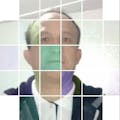


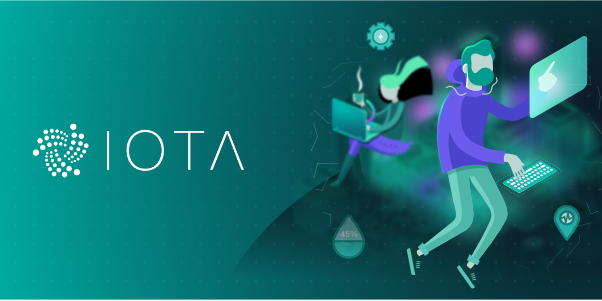
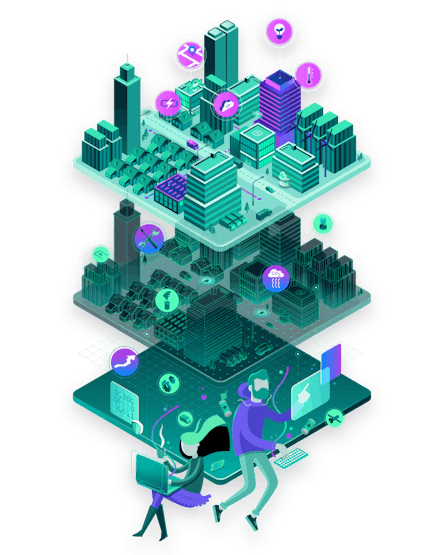



_liKvJxuzbJ.png?auto=compress%2Cformat&w=740&h=555&fit=max)
